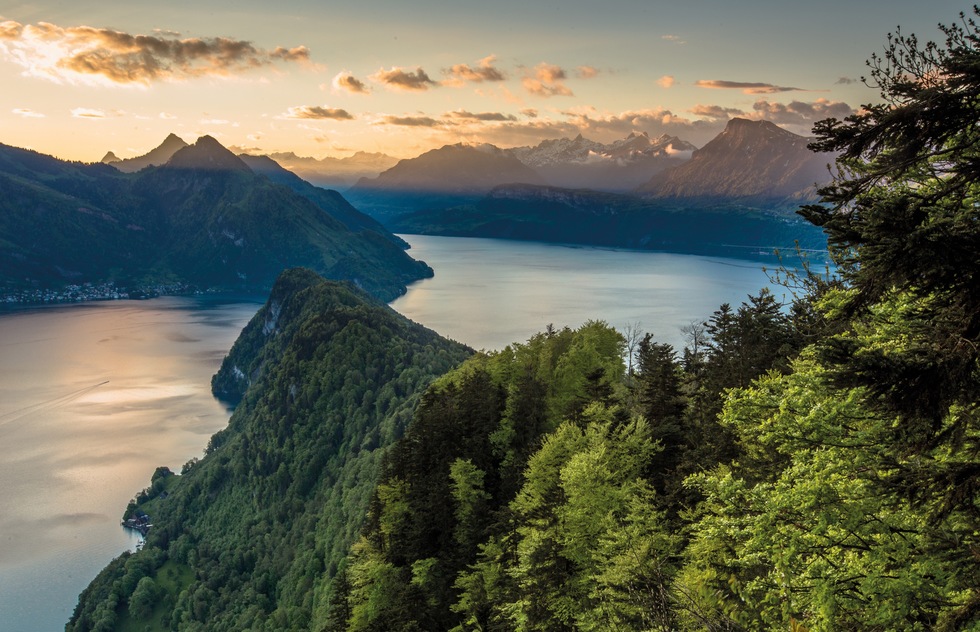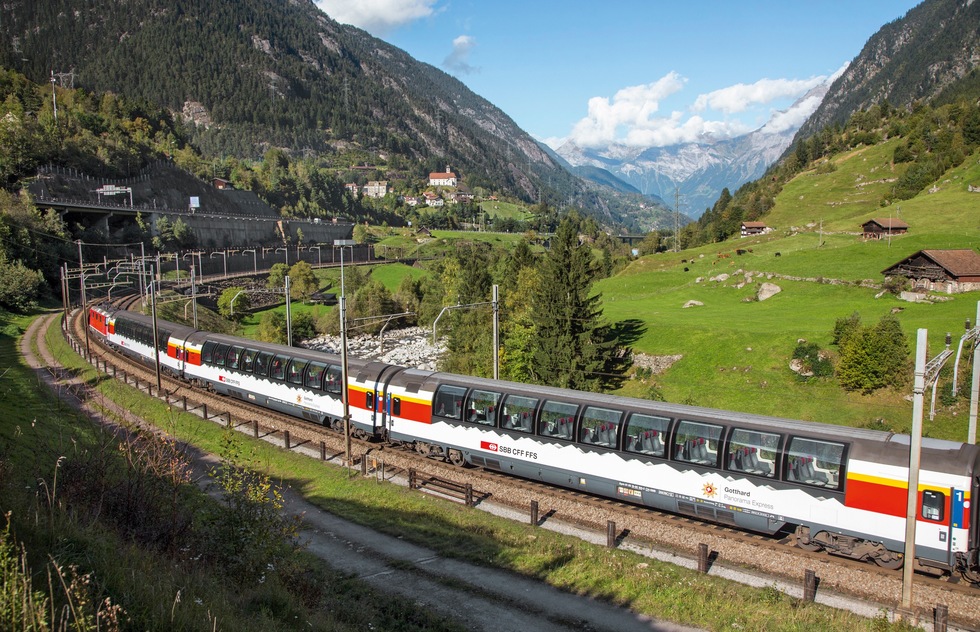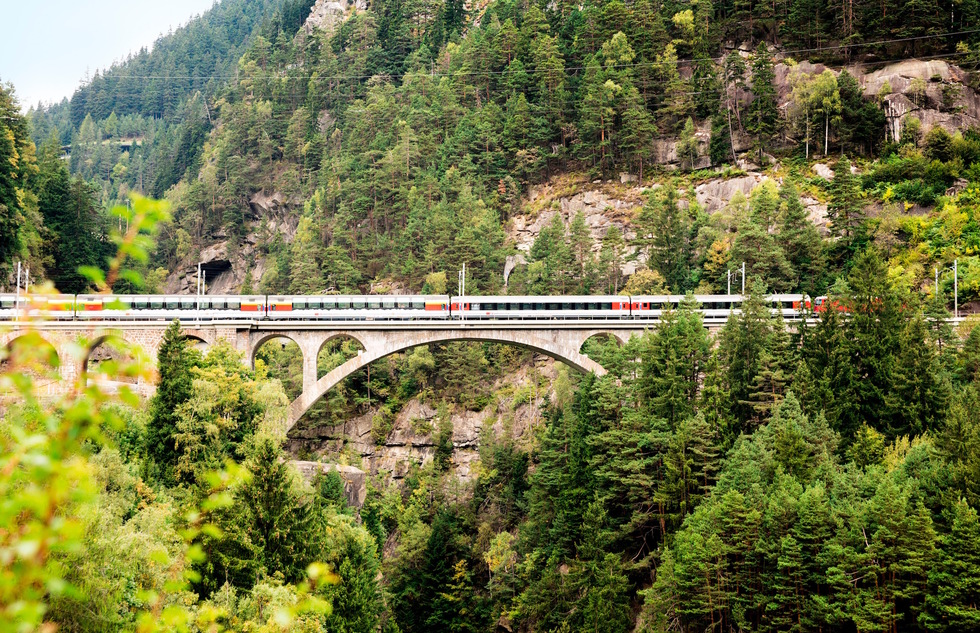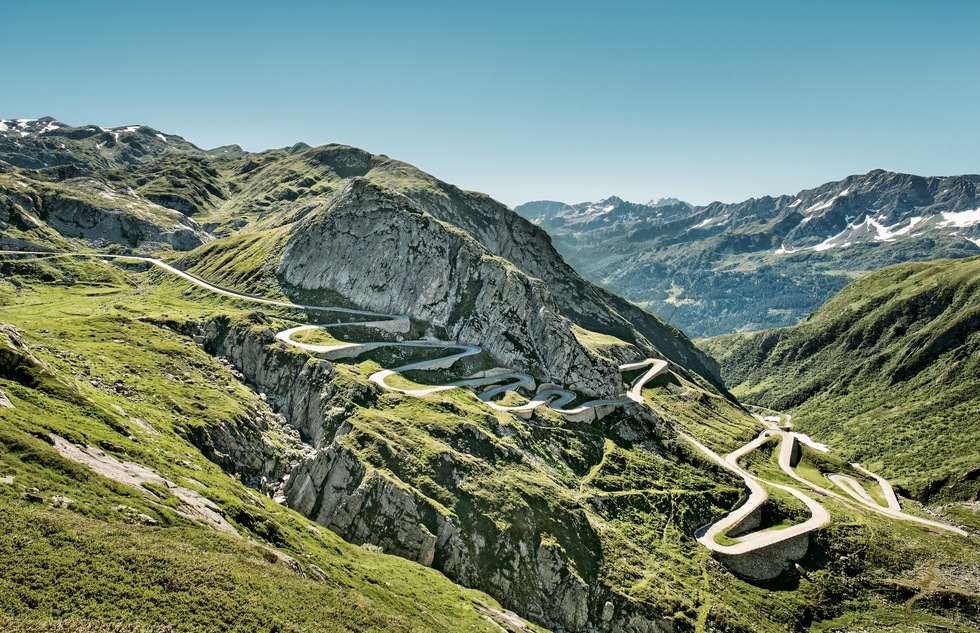The former William Tell Express was one of the crown jewels of Swiss travel. The train would decamp from the placid banks of Lake Lucerne in central Switzerland, clamber some 5,400 tortuous feet up the narrow Reuss Valley, shortchange the pinnacle of one of the Alps’ fiercest massifs by way of a century-old tunnel, and ultimately emerge in sunny Ticino on the “Mediterranean” side of the mountains.
But in December 2016, Swiss Federal Railways (SBB) opened a new tunnel—in fact, the longest train tunnel in the world—making the treacherous old line obsolete. Train lovers wondered what would become of the fabled William Tell Express, but there was nothing to fear. SBB simply rebranded it as the Gotthard Panorama Express and carried on with the journey that combines lakes and daunting peaks, pine trees and palm trees, steamships and railroads. It’s still one of the world’s most striking train journeys. And in Switzerland, that’s saying a lot.
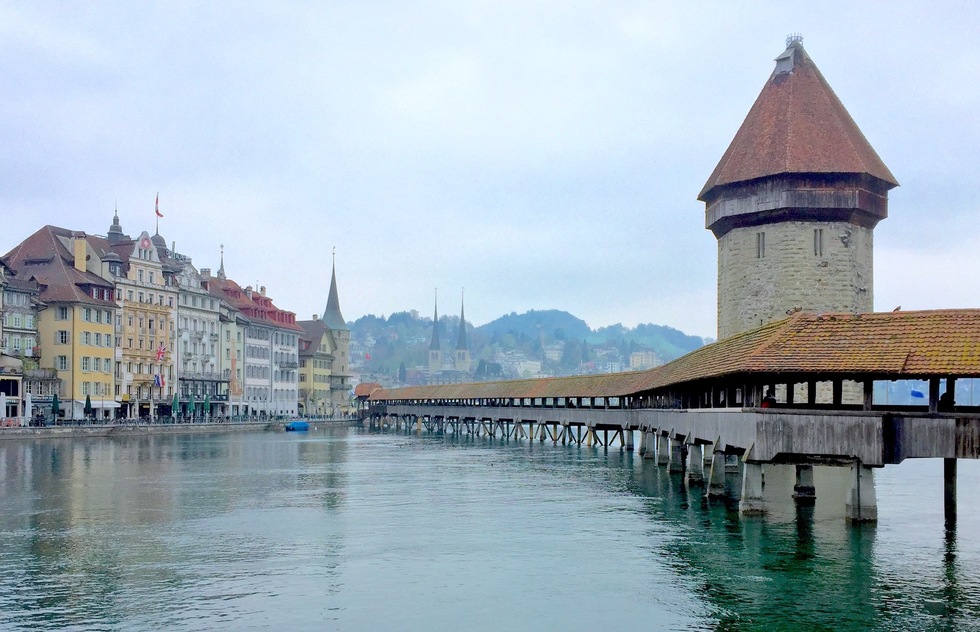
Lovely Lucerne, the Journey’s Starting Point
The odyssey gets underway in the enchanting lakeside tourist city of Lucerne, famous for its well-preserved medieval old town and its nearly 700-year-old key landmark, the covered Kapellbrücke (Chapel Bridge). The Swiss Museum of Transport in Lucerne is an attraction in its own right, but also recommended for its detailed exhibition on the Gotthard route, which provides travelers with an enhanced appreciation for what they will soon encounter.
Sailing into the Mountains
To reach the train, you’ll first have to sail across Lake Lucerne, passing its numerous inlets, coves, and sharp angles. Guests can discern some of the region’s most famous peaks on the boat ride, including Pilatus, Bürgenstock (pictured), and Rigi, which Mark Twain climbed over the course of three days in 1880.
Monument to a Playwright
A steam side-wheeler that carries passengers to the train terminus passes the 65-foot-tall Schillerstein, or Schiller Stone, a mountainside monument to German poet-playwright Friedrich Schiller, author of the drama William Tell. The unlikely landmark, with its golden inscription and its nearly inaccessible setting on a sloping bankside, was dedicated by the founding cantons in 1859 and has since become one of central Switzerland’s most famous tourist sites.
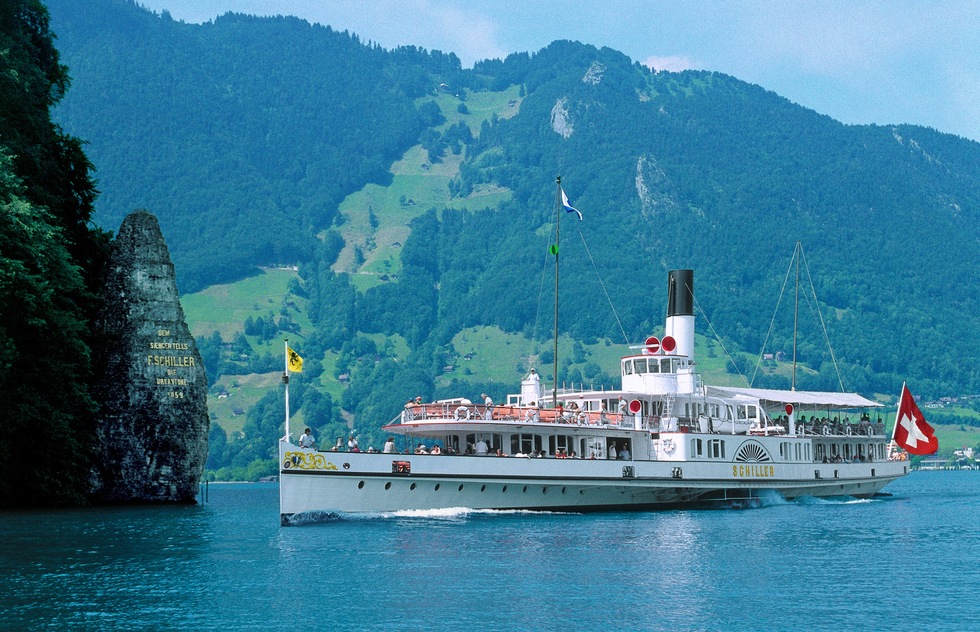
Mountain Meeting Point of the Swiss Founders
En route to the train, the steamship dips its bow to one of the nation’s most revered sites: the Rütli, a mountain meadow (middle right) just above the shores of Lake Lucerne, where representatives of eight independent cantons created the Old Swiss Confederacy in 1307. Every year on August 1, Swiss National Day, the event is recreated in tribute to the founders of what would become modern-day Switzerland.
A Tribute to William Tell
The 1879 Tell Chapel on Lake Lucerne commemorates Swiss folk hero William Tell, who, according to legend, leapt from his captors’ boat near here and subsequently assassinated the Habsburg despot Albrecht Gessler, which opened the door to the independence and unification of the Swiss cantons. A memorial chapel has occupied this site since at least the 16th century.
One Ride Ends, Another Begins, in Flüelen
After guests have their lunch and refreshments on board, the steamship churns its way into the port town of Flüelen (pictured), where the Gotthard Panorama Express is waiting and ready to depart. (The walk from the port to the train takes about three minutes.) Thanks to its position on both the lake and the overland route across the Gotthard Pass, Flüelen has been a key way station for central European north-south travelers since the 13th century.
An Elegant Arch in the Reuss Valley
One of the most eye-catching crossings on the route is the Middle Meienreuss Bridge, with a sinuous span that rises some 230 feet above the Meienreuss River in the canton of Uri. The train traverses scores of bridges and tunnels on its way to Ticino.
The Long and Winding Road to the Gotthard Pass
When the train nears the Gotthard Pass, it enters the original, 9-mile-long tunnel from 1882 and emerges on the southern side of the Alps. An alternative to taking the train would be to drive over the pass on the Tremola (pictured), a zigzag mountain road with terrifying twists, tight turns, and steep inclines that are best suited to steel-hearted drivers.
Courtesy : Mark OrwollAward-winning travel journalist, TV commentator, author (e-Travel, Macmillan) www.frommers.com

